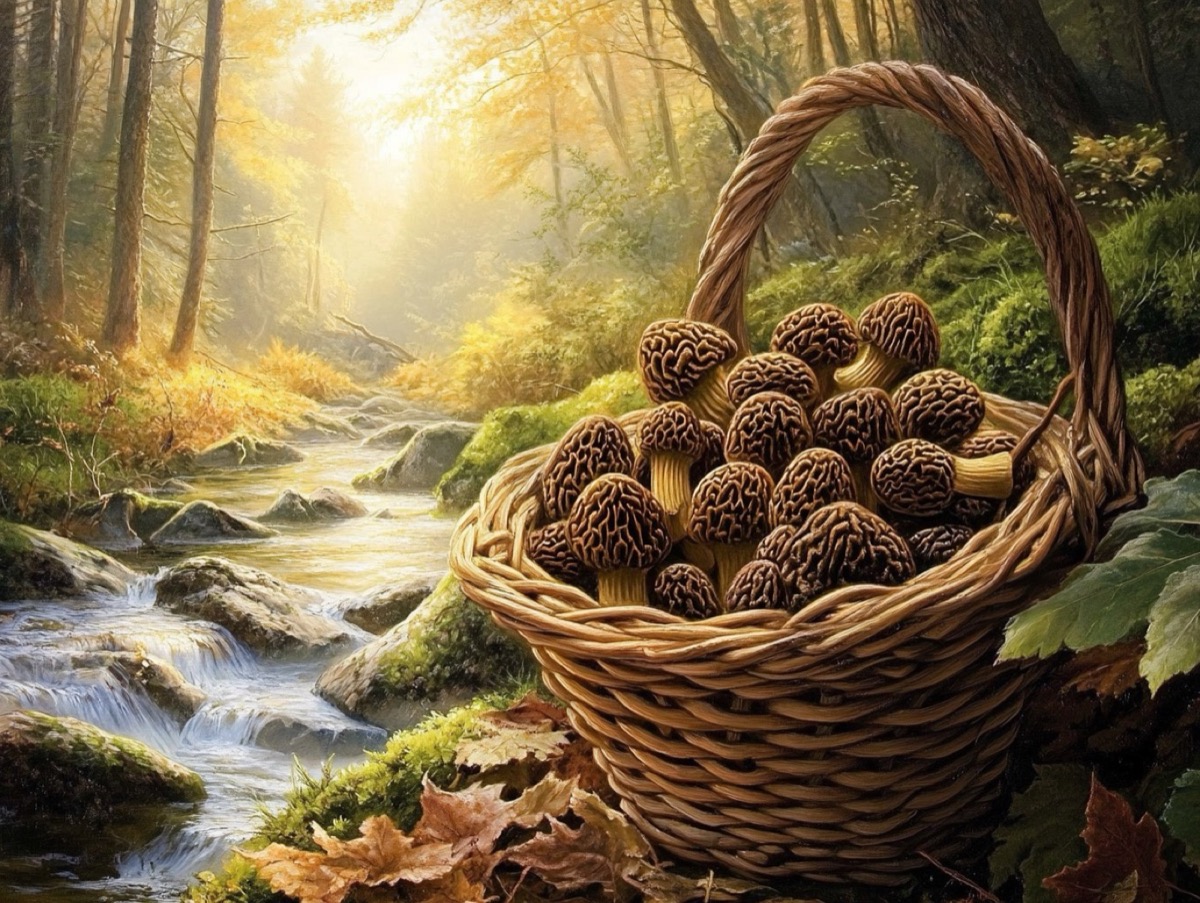East-central Missouri is a great region for morel mushroom hunting, especially during the spring (typically late March through early May depending on weather). There are many ideal habitats for morels in East-Central and St. Louis region of Missouri. Here’s where and what to look for:
1. Deciduous Woodlands
- South-facing slopes warm up faster and are great early-season spots.
- North-facing slopes are good later in the season as they stay cooler longer.
- Forests with mature trees like:
- Elm (especially dying or dead)
- Ash
- Sycamore
- Cottonwood
- Poplar
- Maple
- Old apple orchards
- Tulip poplars and hickories (less common but possible)
2. Near River Bottoms and Streams
- Look along Missouri River tributaries.
- Moist but well-drained soil near water is a prime area, especially after a good rain followed by warm temps.
3. Disturbed Grounds
Morels can pop up abundantly 1–2 years after a forest fire or logging event.
- Burn sites (last year’s wildfires or prescribed burns)
- Areas with recent tree death (e.g., Dutch Elm disease)
- Logged areas or along edges of paths and old logging roads
- Check conservation areas or national/state forests with recent burns.
4. Moist, Loamy Soil
- Bottomland forests, creek beds, and river bottoms
- North or east-facing slopes that stay moist longer
- Leaf-littered ground with plenty of organic matter
Top Public Areas to Search in East-Central Missouri
These public lands are known for morel hunting potential:
1. Mark Twain National Forest (Potosi/Fredericktown area)
- Large tracts of forest with diverse tree cover and low-traffic areas
- Look near streams and in older forest growth
2. Cuivre River State Park (near Troy, MO)
- Mixed hardwood forests, hills, and valleys perfect for morels
3. Mastodon State Historic Site (Imperial, MO)
- Rich soil, river bottoms, and hiking trails with potential morel zones
4. Meramec State Park (near Sullivan, MO)
- Excellent terrain and diverse trees—check floodplains and along the Meramec River
5. Big River and Bourbeuse River Valleys
- Along these rivers you’ll find fertile bottomland with elm, sycamore, and ash trees
Best Time to Hunt Morels
Early Season (soil temps around 50°F): Small black morels appear first.
Mid-Season (55–60°F): Yellow and gray morels start showing up.
Late Season (60–65°F): Larger yellow morels finish the season.
Track soil temps or use the “lilac bloom” or “redbud bloom” as a natural indicator—when these bloom, morels are usually popping.
Tips for Hunting
Walk slowly and scan the ground closely.
- Carry a mesh bag to spread spores as you walk.
- Mark successful spots—you can often return year after year.
- Get out after a warm rain followed by sunny days.
- Remember to always verify that the areas you plan to forage are open to the public and that mushroom collecting is permitted. Happy hunting!
